
Xoloitzcuintli (Xoloitzcuintle): A Comprehensive Guide
History of the Breed
The Xoloitzcuintli, often referred to simply as the «Xolo,» is one of the world’s oldest and rarest dog breeds, with a rich history dating back over 3,000 years in Mexico. The breed’s name is derived from the Aztec god Xolotl and the Aztec word «itzcuintli,» which means dog. Xolos were highly regarded by ancient civilizations such as the Aztecs, Toltecs, and Mayans, who believed they possessed mystical powers and were guardians of the afterlife.
Throughout history, Xolos served various roles, including companionship, protection, and even sacrificial offerings. They were revered for their loyalty, intelligence, and distinctive appearance. Despite facing near extinction during the Spanish conquest of the Americas, dedicated breed enthusiasts worked tirelessly to preserve and promote the breed, leading to its resurgence in modern times.
Physical Characteristics
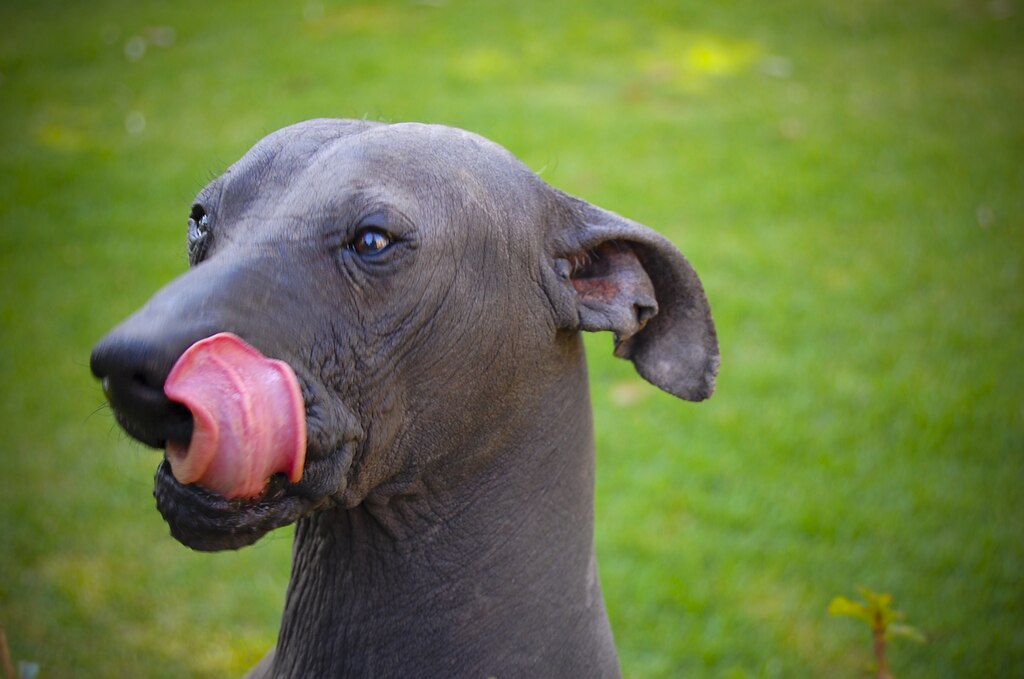
The Xoloitzcuintli is a unique and distinctive breed with a striking appearance. It comes in three sizes: toy, miniature, and standard, and two varieties: hairless and coated. The hairless variety features smooth, soft skin with sparse hair on the head and tail, while the coated variety has a short, sleek coat that comes in a variety of colors, including black, bronze, and slate.
One of the most notable features of the Xolo is its elegant and graceful appearance, with a lean, muscular build and a noble carriage. They have a wedge-shaped head, almond-shaped eyes, and large, expressive ears that stand erect when alert. Despite their hairless appearance, Xolos require regular grooming to maintain healthy skin and protect against sunburn and irritation.
Health and Basic Care
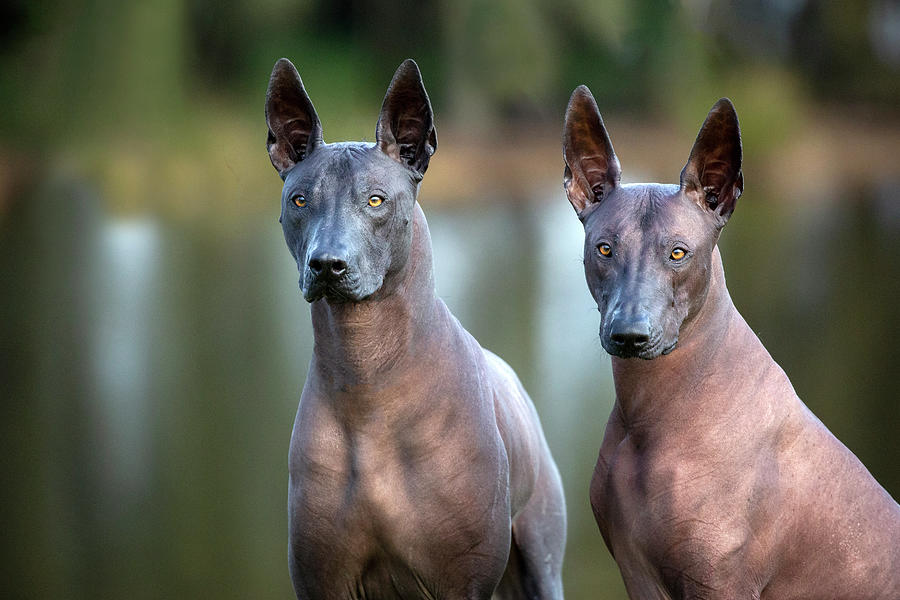
Overall, Xoloitzcuintlis are a relatively healthy breed with a lifespan of 12 to 14 years. However, like all dog breeds, they may be prone to certain health issues, including skin allergies, dental problems, and patellar luxation. Regular veterinary check-ups, a balanced diet, and proper dental care are essential for maintaining their health and well-being.
Xolos have unique skin care needs due to their hairless or coated coats. Hairless Xolos require regular baths to remove oil buildup and prevent skin infections, while coated Xolos benefit from occasional brushing to remove loose fur and minimize shedding. Additionally, both varieties should be protected from extreme temperatures and sun exposure to prevent sunburn and heatstroke.
Temperament and Personality
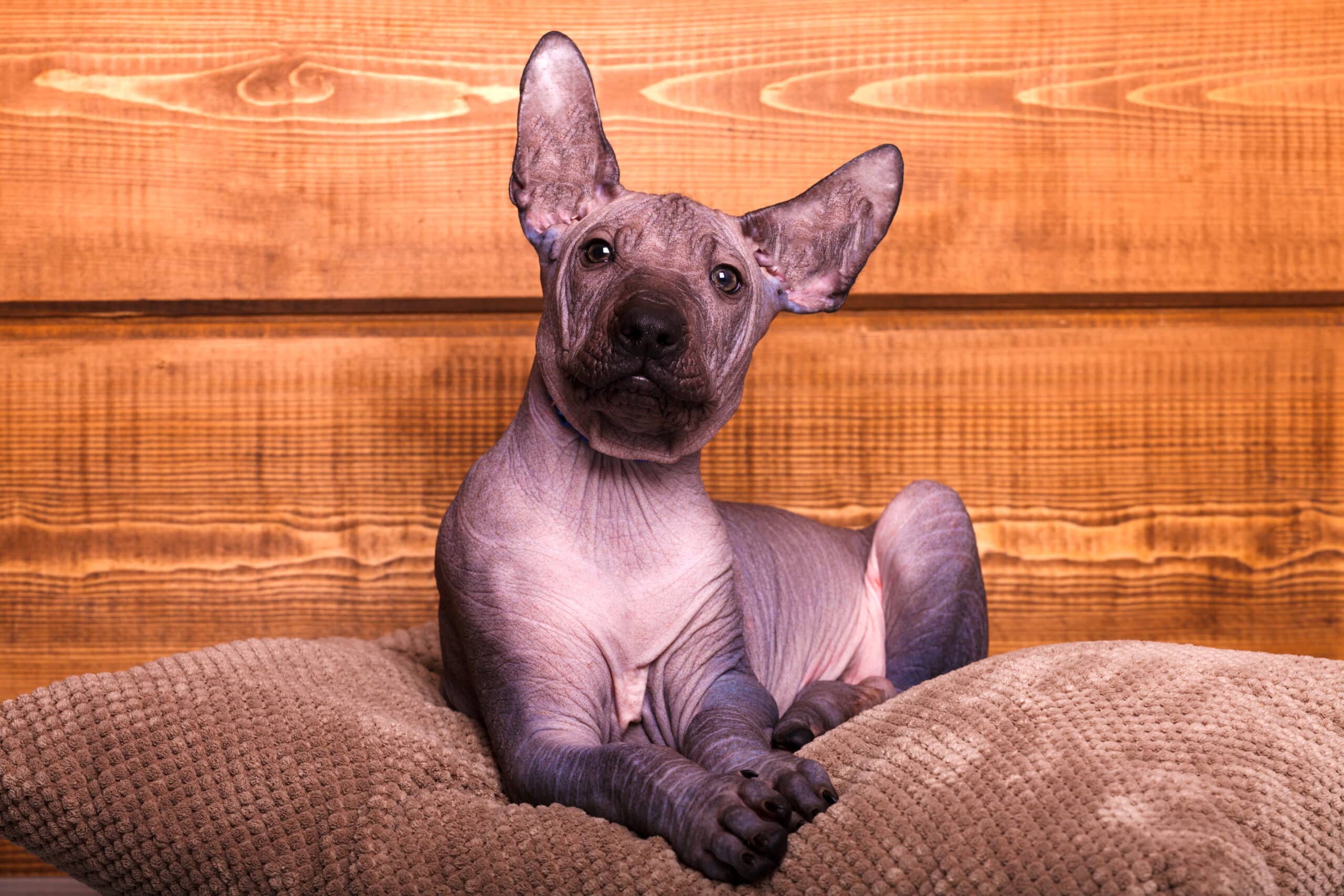
The Xoloitzcuintli is known for its intelligent, loyal, and affectionate nature. They form strong bonds with their families and are devoted companions who thrive on human interaction and companionship. Despite their ancient lineage and regal appearance, Xolos are playful and energetic dogs who enjoy engaging in activities with their owners.
Xolos are excellent watchdogs and have a natural instinct to protect their families and property. They may be reserved or aloof around strangers, but they are not typically aggressive unless provoked. Early socialization is essential to help them develop confidence and good manners around unfamiliar people and animals.
Training and Socialization
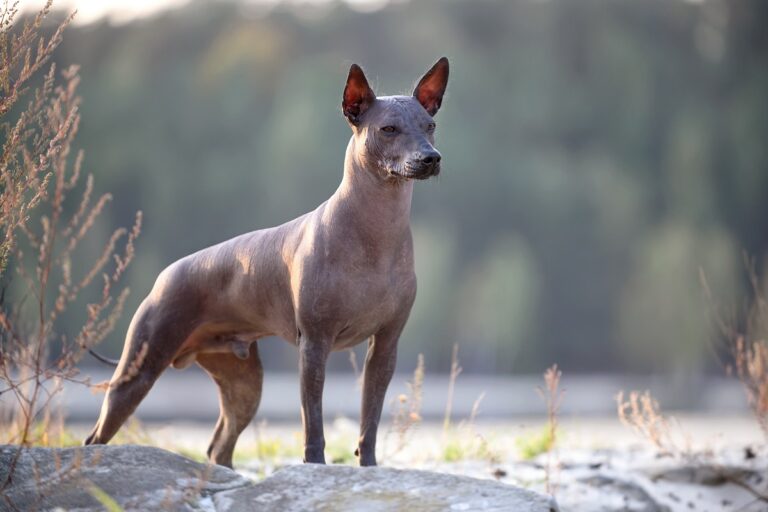
Training a Xoloitzcuintli requires patience, consistency, and positive reinforcement techniques. They are intelligent dogs but can be independent and strong-willed, so early socialization and obedience training are essential. Exposing them to different environments, people, and animals from a young age will help prevent fearfulness or aggression later in life.
Xolos respond well to reward-based training methods, such as treats, praise, and playtime. They enjoy learning new tricks and tasks and thrive on mental stimulation. Positive interactions with strangers, children, and other dogs will also contribute to their social development and ensure they are well-adjusted family members.
Nutrition
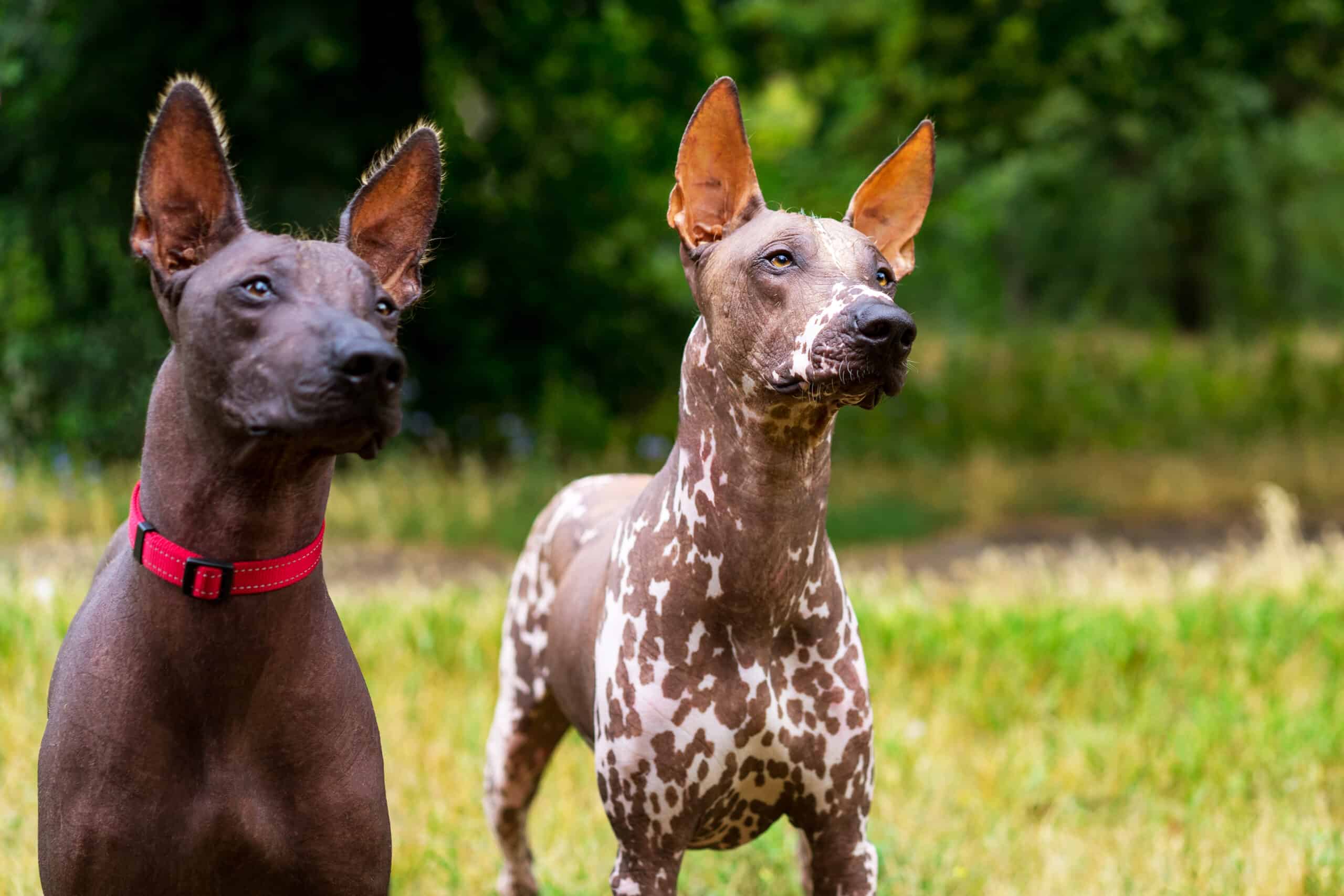
A well-balanced diet is crucial for maintaining the health and vitality of a Xoloitzcuintli. Choose a high-quality dog food formulated for their size, age, and activity level, with a balance of protein, fat, carbohydrates, vitamins, and minerals. Avoid overfeeding and monitor their calorie intake to prevent obesity, as Xolos have a tendency to gain weight if not exercised adequately.
It’s essential to provide fresh water at all times to keep your Xoloitzcuintli hydrated, especially during periods of exercise or hot weather. Treats can be given in moderation as rewards during training sessions, but avoid feeding table scraps or high-calorie snacks that can contribute to weight gain and nutritional imbalances.
Suitable Environment
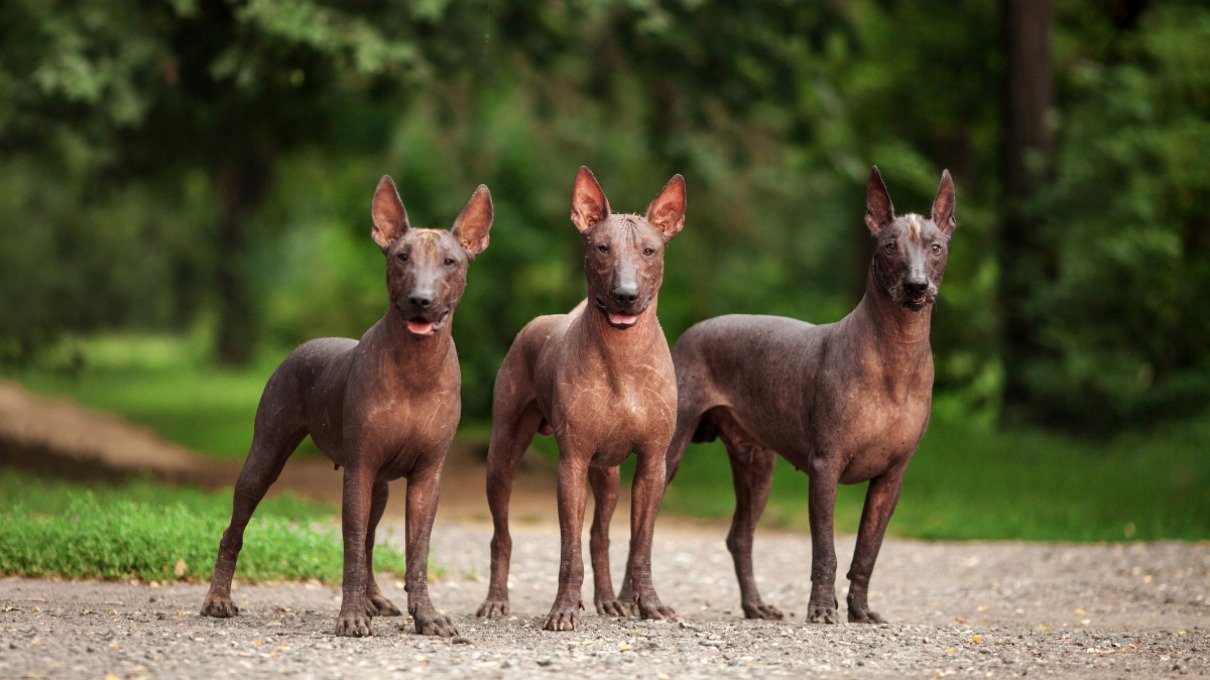
Xoloitzcuintlis are adaptable dogs that can thrive in various living environments, including apartments, suburban homes, or rural settings. However, they require plenty of exercise and mental stimulation to prevent boredom and destructive behavior. Daily walks, play sessions, and opportunities for indoor and outdoor activities are essential for meeting their exercise needs.
While they enjoy spending time indoors with their families, Xoloitzcuintlis also benefit from access to outdoor space where they can run and explore. Secure fencing is essential, as they may have a tendency to wander if left unsupervised. Additionally, they should be provided with mental enrichment activities, such as puzzle toys and interactive games, to keep their minds stimulated.
Frequently Asked Questions
Do Xoloitzcuintlis require special skin care?
Yes, Xoloitzcuintlis have unique skin care needs due to their hairless or coated coats. Hairless Xolos require regular baths to remove oil buildup and prevent skin infections, while coated Xolos benefit from occasional brushing to remove loose fur and minimize shedding. Additionally, both varieties should be protected from extreme temperatures and sun exposure to prevent sunburn and heatstroke.
Are Xoloitzcuintlis good with children?
Xoloitzcuintlis can be excellent family pets when raised with children and properly socialized from a young age. They are playful, affectionate, and enjoy the company of people of all ages. However, as with any dog breed, it’s essential to supervise interactions between Xoloitzcuintlis and young children to ensure everyone’s safety.
Are Xoloitzcuintlis hypoallergenic?
While no dog breed is truly hypoallergenic, Xoloitzcuintlis may be suitable for allergy sufferers due to their minimal shedding and hairless coat. However, individual sensitivity to dog dander can vary, so it’s essential to spend time with a Xolo before bringing one into your home if you have allergies. Regular grooming and bathing can also help minimize allergens and keep your Xolo’s coat healthy and clean.
